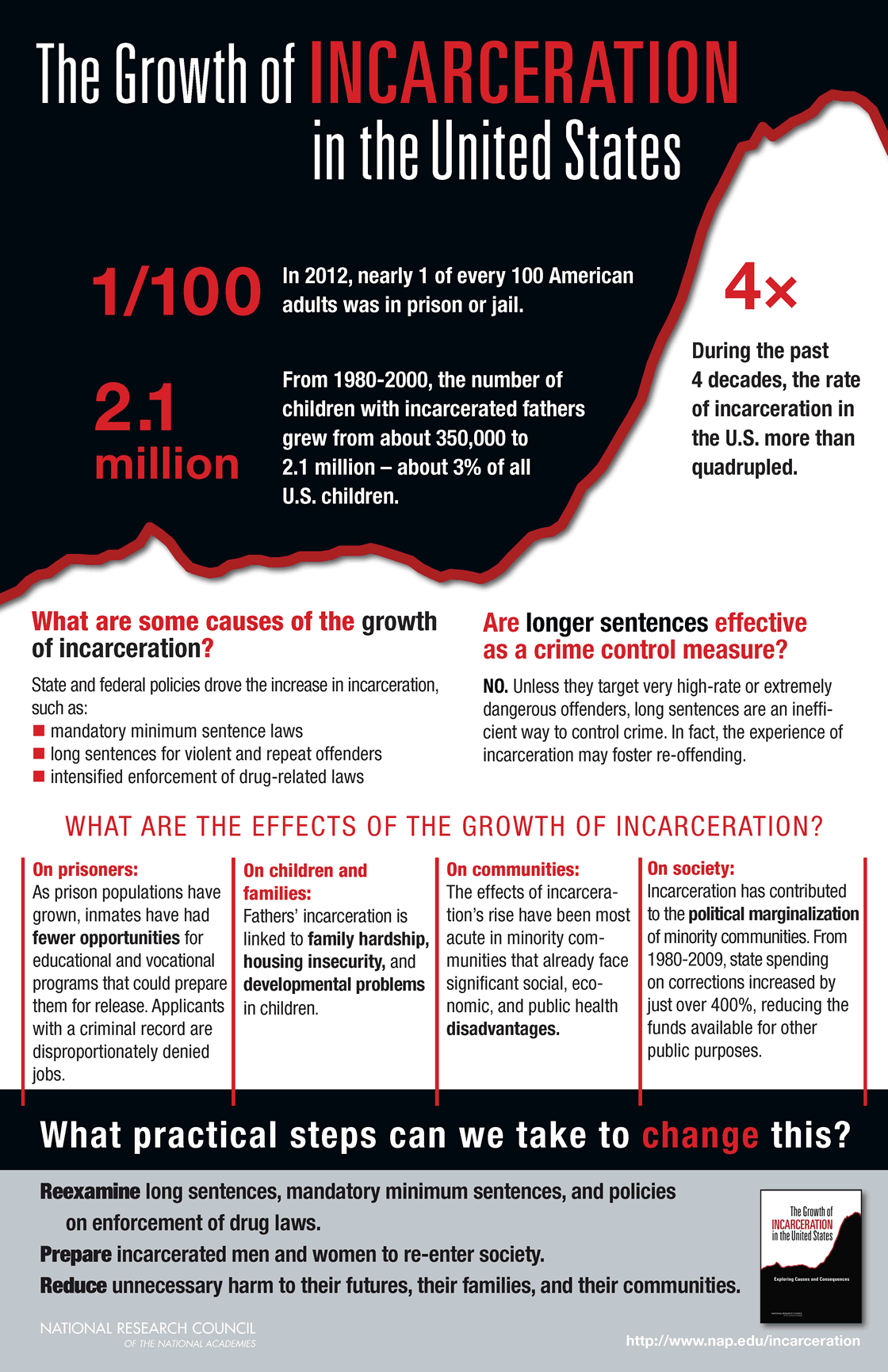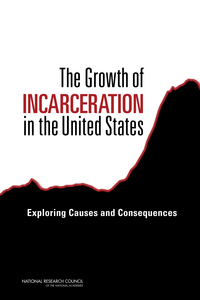Almost every day, our country’s criminal justice system is being questioned. Part of that is due to the fact that our reliance on imprisonment has not clearly improved public safety and may have had large unwanted consequences for society. A change in course is needed.
The Growth of Incarceration in the United States urges policymakers to reconsider sentencing policies and to seek crime-control strategies that are more effective, with better public safety benefits and fewer unwanted consequences. The video below illustrates the findings of that report.
The Dissemination Toolkit contains resources to help expand the reach of the report. Issue Briefs, Report Briefs, and an update on report activities from the report committee chair, Jeremy Travis, can inform discussion and debate about incarceration in the United States and its effects on individuals, families, communities, and society.
After decades of stability from the 1920s to the early 1970s, the rate of imprisonment in the United States more than quadrupled during the last four decades. The U.S. penal population of 2.2 million adults is by far the largest in the world. Just under one-quarter of the world’s prisoners are held in American prisons. The U.S. rate of incarceration, with nearly 1 out of every 100 adults in prison or jail, is 5 to 10 times higher than the rates in Western Europe and other democracies. The …
This infographic from the National Academies Press highlights the causes and effects of the increasing rate of incarceration in the U.S., as detailed in the full report.

